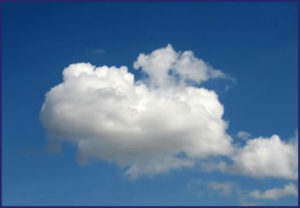
ANICCA
The legends that describe the early life of the Buddha suggest that as a young man he led an extremely privileged and sheltered existence. Prince Gautama (the Buddha’s family name) had seen nothing of poverty and violence, and his parents had even managed to keep illness and death out of his sight. It was only when he left his home that he came face to face with these disturbing aspects of life and he was no doubt perturbed and perplexed by what he confronted. As he travelled he saw poor and hungry peasants trying to feed themselves and their children. He saw babies born, children growing, men and women getting older and frailer, and he saw the bodies of the dead being burned on pyres surrounded by mourners who howled with grief and loss. Wherever he looked he noticed how transient everything is, how things arise and pass away; how the seasons come and go; how flowers bloom and wither; how trees grow from tiny seeds into forest giants only, one day, to fall down and crumble into dust; he saw small rivulets turning into streams, eventually flowing into big rivers that emptied into the sea; he watched clouds changing shape, dropping rain and snow as they reach high mountains; and he noticed how mountains themselves are eroded by rain and ice, avalanches cascading into rivers only to be washed away.
The young prince realised that nothing is exempt from this process of growth and decay. Everywhere around him he encountered only change and impermanence. There is nothing that keeps its form or structure forever. From the smallest butterfly to the highest mountain, there is nothing that isn’t passing away even as it comes into being. Impermanence or transience (anicca) is the first mark of existence.
ANATTA
If everything changes in this way, he thought, then nothing can have a stable or enduring identity. The core of the tree is subject to change and decay as much as the outer leaves. Eventually even the heart of a mountain is eaten away by the remorseless action of water, ice and wind. Indeed, he could see that one thing becomes another: chicks become birds; caterpillars become moths; frog-spawn turns into tadpoles and then frogs; apple-blossom will one day become an apple – and it doesn’t end there: an apple may be eaten by a monkey; the chewed-up apple is digested and monkey droppings are scattered on the forest floor; the monkey dung is eaten by beetles and other creatures, and breaks down into the humus that provides food for the mighty trees. Again, nothing seems to be exempt from this process of recycling: one thing becoming another, over and over again. Everything seems, over time, to merge with everything else. Great chains of connection and causality are woven through the universe, in such a way that nothing stands alone and separate. Everything is interwoven with everything else. The fact that nothing exists separate from anything else and therefore, that nothing has an enduring essence or self-existence (anatta) is the second mark of existence.
DUKKHA
As the young prince continued on his journey he began to notice something that surprised and puzzled him. He saw how people lived their lives talking, planning and acting as if things were separate and independent of each other, and he saw how people clung to a desire for permanence and unchanging stability – something his parents had been trying to do during his childhood. It was as if everyone hadn’t noticed the changing interdependence of everything that surrounded them – as if they were living in a dream world of stability and permanence, afraid to wake up to the ceaselessly changing nature of the actual universe.
On top of the natural sense of loss at the death of an aged parent he could see that many people also suffer because they believe, or rather hope and pray, that no-one should die or that no-one should become ill or old. It is as if they set themselves against the first two marks of existence, trying to deny or ignore the way things are. This attachment to a false understanding (avidyā) of how the world is, causes people to become dissatisfied and frustrated, only adding to their suffering. Dreaming and hoping for permanence, and clinging desperately to things, ideas and other people as they change and pass away, only makes us more unhappy, restless and uneasy. This state of dissatisfaction, unhappiness and unease (dukkha) is the third mark of existence.
This mark of existence, the state of unnecessary suffering and dis-ease, is caused by a failure to recognise and live with the inevitability of the other two conditions of life. While the first two marks or conditions can’t be changed, the third can: by changing the way in which we think about, relate to and experience the world. The young Prince vowed to devote himself to finding a way to transform his approach to life and to enable everyone to wake up to the first two marks of existence and to alleviate dissatisfaction and unnecessary suffering. His methods for doing this, particularly mindful meditation, have been tried and tested over centuries and form the basis of contemporary Buddhist practice throughout the world.
